Fruits are often hailed as healthy treats packed with vitamins and antioxidants, but when it comes to your furry friend, not all fruits are safe. While some can be a nutritious addition to a dog’s diet, others can pose serious health risks, ranging from digestive upset to life-threatening toxicity. As a responsible dog owner, knowing which fruits to avoid is crucial to ensuring your pet’s well-being.
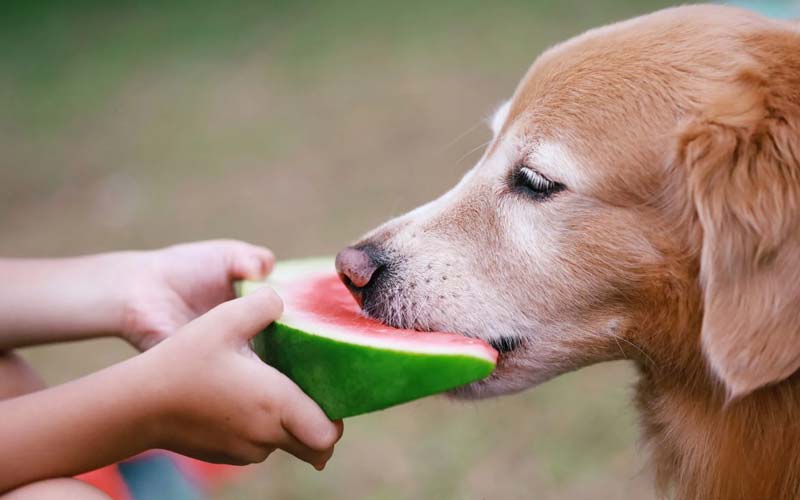
This guide explores common fruits that are harmful to dogs, explains the dangers they pose, and provides tips on safe alternatives. By the end, you’ll have the knowledge needed to keep your canine companion healthy and safe while satisfying their occasional craving for something fruity.
1. Why Certain Fruits Are Dangerous for Dogs
Dogs have a unique digestive system that differs significantly from humans, making them more sensitive to certain compounds found in fruits. While humans can process a wide range of plant-based foods, a dog’s body lacks the enzymes needed to break down some toxic substances, leading to harmful or even life-threatening effects.
Key Risks of Feeding Dogs the Wrong Fruits
1. Toxicity
Some fruits contain compounds that are highly toxic to dogs. For example:
- Grapes and raisins can cause acute kidney failure, even in small quantities.
- Cherries contain cyanide in their pits and stems, which interferes with cellular oxygen absorption.
2. Gastrointestinal Issues
High acidity in fruits like citrus (lemons, limes, and grapefruits) can irritate a dog’s stomach lining, causing vomiting or diarrhea. Fruits with seeds, like persimmons, may also lead to blockages or inflammation in the digestive tract.
3. Choking Hazards
Many fruits have pits, seeds, or tough skins that can pose a choking hazard or obstruct the airway, particularly in smaller breeds. Examples include:
- Avocado pits, which are not only large and hard but also contain toxic persin.
- Apple seeds, which release trace amounts of cyanide when chewed.
Why Knowing Safe vs. Unsafe Foods Matters
Feeding the wrong fruits to your dog can lead to emergency vet visits and costly treatments. Understanding which fruits are safe allows you to provide occasional treats without risking their health. Always consult a veterinarian before introducing new foods to your dog’s diet, as even safe fruits can cause adverse reactions in dogs with specific health conditions or sensitivities.
By staying informed, you can protect your dog from harm while still offering them healthy and enjoyable dietary options.

2. Common Fruits Dogs Should Never Eat
Certain fruits can be dangerous or even life-threatening to dogs due to toxic compounds, choking hazards, or digestive issues. Below are some common fruits that should never be part of a dog’s diet, along with why they are harmful and the symptoms to watch for.
1. Grapes and Raisins
Why Dangerous: Grapes and raisins are highly toxic to dogs, even in small amounts. They can cause acute kidney failure, a potentially fatal condition. The exact substance causing toxicity is unknown, but the effects are severe and unpredictable.
Symptoms of Toxicity:
- Vomiting, often within hours of ingestion.
- Lethargy and weakness.
- Loss of appetite.
- Increased thirst or urination, indicating kidney distress.
- Advanced cases may result in coma or death.
2. Avocados
Why Dangerous: Avocados contain persin, a fungicidal toxin. While the flesh has lower levels, the pit, skin, and leaves contain higher concentrations, making them particularly harmful. Large avocado pits also pose a choking risk.
Parts to Avoid:
- All parts: flesh, pit, skin, and leaves.
Symptoms:
- Vomiting and diarrhea.
- Difficulty breathing (in severe cases).
3. Cherries
Why Dangerous: Cherry pits, stems, and leaves contain cyanide, which is toxic to dogs. Even ingesting a small number of pits can lead to poisoning.
Symptoms of Cyanide Poisoning:
- Labored breathing.
- Red or inflamed gums.
- Dilated pupils.
- Signs of shock, such as weakness or collapse.
4. Citrus Fruits (Lemons, Limes, Grapefruits)
Why Dangerous: Citrus fruits are highly acidic and contain essential oils like limonene and psoralens that can irritate a dog’s digestive system and, in large quantities, may lead to toxicity.
Effects on Dogs:
- Vomiting and diarrhea.
- Excessive drooling or lip-smacking.
- In severe cases, depression or tremors.
5. Persimmons
Why Dangerous: Persimmons contain seeds that can cause intestinal blockages or irritation. They may also lead to inflammation of the small intestine, especially in smaller breeds.
Symptoms:
- Abdominal pain.
- Vomiting and diarrhea.
- Decreased appetite.
Final Note
Avoiding these fruits and monitoring your dog’s diet can help prevent serious health issues. If you suspect your dog has ingested any of these fruits, seek veterinary attention immediately. Quick action can make all the difference in managing potential toxicity or complications.
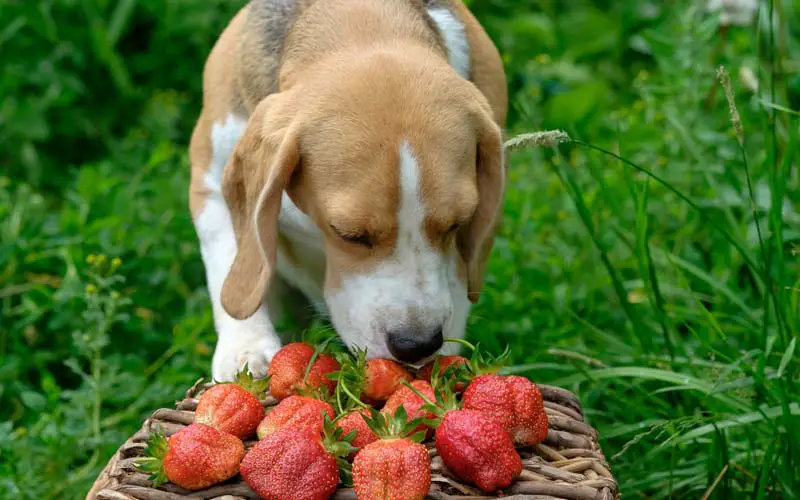
3. Lesser-Known Fruits to Avoid
While some harmful fruits like grapes or cherries are well-known risks for dogs, there are lesser-known fruits that can also be dangerous. Here’s what you need to know about these often-overlooked threats:
1. Plums
Why Dangerous: The pits of plums contain cyanide, a toxic compound that can cause poisoning if ingested. Additionally, the size and shape of the pits pose a significant choking hazard or risk of intestinal blockage, particularly in smaller dogs.
Symptoms of Danger:
- Difficulty breathing or lethargy (cyanide poisoning).
- Vomiting or signs of abdominal pain (blockage).
2. Rhubarb
Why Dangerous: Rhubarb leaves contain oxalates, compounds that can cause serious health problems in dogs, including kidney damage and nervous system disorders. While the stalks are less harmful, they should still be avoided.
Symptoms of Toxicity:
- Drooling, vomiting, or diarrhea.
- Tremors or signs of weakness.
- Difficulty urinating (indicating kidney distress).
3. Unripe Tomatoes
Why Dangerous: Green, unripe tomatoes and the stems or leaves of tomato plants contain solanine, a glycoalkaloid that is toxic to dogs in large amounts. While ripe tomatoes are generally safe in small quantities, the unripe parts should be avoided entirely.
Symptoms of Solanine Poisoning:
- Vomiting and diarrhea.
- Lethargy or muscle weakness.
- Tremors or seizures in severe cases.
4. Wild Berries
Why Dangerous: While some berries are safe for dogs, many wild varieties contain unknown or toxic compounds that can harm their digestive or nervous systems. Examples include holly berries, mistletoe berries, and elderberries, all of which are toxic.
Symptoms of Toxicity:
- Nausea or vomiting.
- Excessive drooling or diarrhea.
- In severe cases, seizures or respiratory distress.
Prevention Tips
- Always identify fruits before feeding them to your dog.
- Avoid giving your dog access to gardens or areas with wild berries, rhubarb plants, or unripe tomatoes.
- If you suspect your dog has ingested any harmful fruit, contact your veterinarian immediately.
By staying vigilant about these lesser-known fruits, you can better protect your dog from accidental harm.

4. Symptoms of Fruit Poisoning in Dogs
Recognizing the signs of fruit poisoning in dogs is crucial for quick intervention. While symptoms can vary depending on the fruit and the amount ingested, some common indicators signal a potential problem.
Common Symptoms of Fruit Poisoning
Digestive Issues:
- Vomiting and diarrhea are the most immediate signs, often occurring within hours of ingestion.
- Persistent vomiting or bloody diarrhea may indicate severe toxicity.
Weakness and Lethargy:
- Your dog may appear unusually tired or uninterested in usual activities.
- This could result from dehydration, internal distress, or toxin absorption.
Neurological Symptoms:
- Tremors, seizures, or loss of coordination may occur with severe poisoning (e.g., from grapes, raisins, or cherries).
- Pupillary changes, such as dilated or non-responsive pupils, can signal cyanide poisoning from cherry pits.
Other Signs:
- Increased thirst or urination (often linked to kidney issues).
- Labored breathing, pale gums, or signs of shock in severe cases.
When to Act
- Persistent Symptoms: If vomiting or diarrhea lasts more than a few hours, or if your dog shows signs of weakness or neurological issues, seek veterinary help immediately.
- Known Ingestion of Toxic Fruits: If you suspect your dog has consumed fruits known to be harmful, such as grapes, cherries, or avocados, don’t wait for symptoms to develop—contact your veterinarian or an emergency clinic right away.
The Importance of Immediate Veterinary Care
Delaying treatment can increase the severity of fruit poisoning. Some toxins, like those in grapes and raisins, can lead to irreversible kidney damage if untreated. Veterinary intervention often includes:
- Inducing vomiting to prevent further toxin absorption.
- Administering activated charcoal to neutralize toxins.
- Providing supportive care, such as IV fluids or medications, to manage symptoms and protect organs.
Early recognition and swift action can save your dog’s life in cases of fruit poisoning. When in doubt, always consult a veterinarian to ensure your pet’s safety.
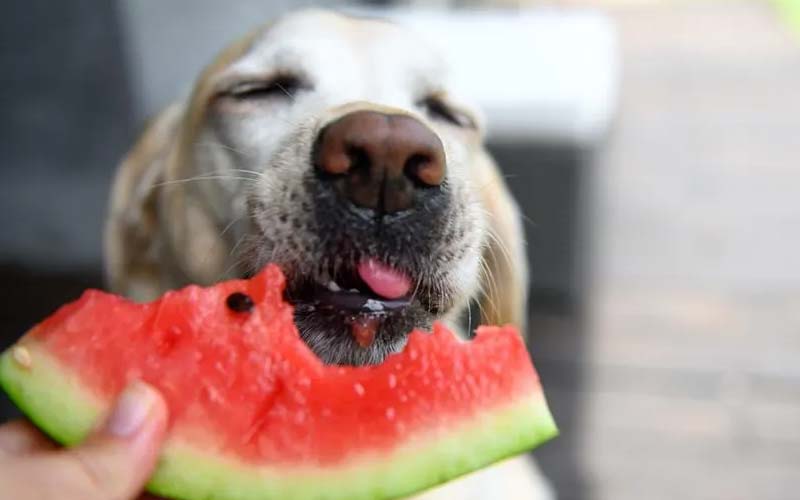
5. Safe Alternatives for Treats
While there are several fruits that can be harmful to dogs, many fruits are safe and healthy alternatives that your dog will enjoy. These fruits are not only delicious but also provide beneficial vitamins and nutrients for your pet. However, it’s important to offer them in moderation and with proper preparation. Here are some fruits that dogs can safely consume:
1. Apples (Seedless)
- Why Safe: Apples are a great source of fiber, vitamins A and C, and antioxidants. The flesh of the apple is easy on your dog’s stomach and offers a crunchy texture that can be satisfying.
- Preparation Tip: Always remove the seeds and core, as apple seeds contain cyanide, which can be harmful in large quantities. Slice the apple into small, manageable pieces to avoid choking hazards.
2. Bananas
- Why Safe: Bananas are rich in potassium, fiber, and vitamin C, making them a nutritious option for your dog. They’re also low in fat, which makes them a suitable choice for most dogs, including those with sensitive stomachs.
- Preparation Tip: Serve in moderation, as bananas are high in sugar. Slice the banana into small pieces to avoid overfeeding.
3. Blueberries
- Why Safe: Blueberries are a superfood packed with antioxidants, fiber, and vitamin C. These tiny fruits are also low in calories, making them an excellent option for a guilt-free treat.
- Preparation Tip: Offer fresh or frozen blueberries. They can be used as a fun training treat or added to your dog’s regular food. Avoid offering too many at once to prevent an upset stomach.
4. Watermelon (Seedless)
- Why Safe: Watermelon is hydrating, low in calories, and packed with vitamins A, B6, and C. It’s a great option for hot weather, as it helps keep your dog cool and hydrated.
- Preparation Tip: Always remove the seeds and rind before offering watermelon to your dog, as they can cause digestive issues or be a choking hazard. Cut it into bite-sized pieces for easy consumption.
General Tips for Serving Fruit to Your Dog
- Moderation: While fruits are healthy, they should be given in moderation due to their sugar content. Too much fruit can lead to gastrointestinal upset or weight gain, especially in smaller dogs.
- Proper Preparation: Always remove pits, seeds, and skins where necessary to avoid choking or potential toxicity. For large fruits, like apples or watermelons, cut them into small, bite-sized pieces.
- Watch for Allergies: Introduce new fruits gradually and monitor for any signs of food allergies, such as itching, swelling, or gastrointestinal issues.
By offering your dog safe, healthy fruits in moderation, you can provide a tasty treat while also enhancing their overall nutrition. Always consult with your veterinarian if you have any concerns about which fruits are appropriate for your dog’s specific dietary needs.
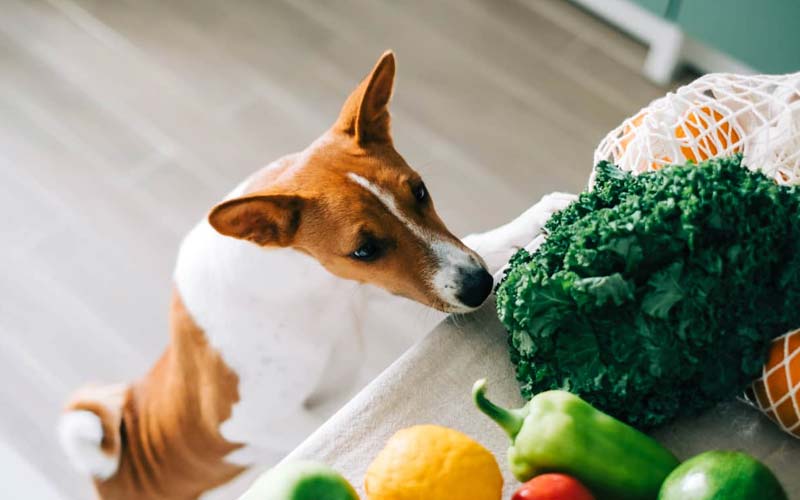
6. Practical Tips to Prevent Accidental Ingestion
Preventing your dog from ingesting harmful fruits requires vigilance and proactive measures. By taking steps to limit access to dangerous foods and educating everyone in your household, you can significantly reduce the risk of accidental poisoning. Here are some practical tips to help keep your dog safe:
1. Keep Harmful Fruits Out of Reach
- Storage: Always store fruits like grapes, raisins, avocados, and cherries in places your dog cannot access, such as in high cabinets or the refrigerator. Avoid leaving fruits on counters or tables where they might be within your dog’s reach.
- Waste Disposal: Be mindful when disposing of fruit scraps. Dogs are often quick to scavenge, so make sure fruit pits, seeds, and peels are placed in closed trash bins to prevent accidental ingestion.
2. Educate Family Members, Especially Children
- Awareness: Teach all members of your household, especially children, which fruits are harmful to dogs. Explain the risks of certain fruits and the importance of not feeding dogs scraps from meals or leftovers.
- Supervision: Remind children not to feed their pets fruits without adult supervision, and encourage them to clean up after meals to prevent leftover harmful fruit from being within your dog’s reach.
3. Monitor Dogs During Outdoor Activities
- Gardens and Fruit-Bearing Plants: If you have a garden or outdoor area with fruit-bearing plants (e.g., apple trees, berry bushes, or grapevines), supervise your dog closely when they’re outside. Dogs may be attracted to fallen fruit or plants, especially those that are ripe or smell enticing.
- Leash and Command: During walks or playtime in parks, ensure your dog is on a leash or under close control to prevent them from finding and eating harmful fruit on the ground. Always be aware of their environment to avoid unexpected encounters with dangerous fruits.
4. Keep Emergency Information Handy
- Vet and Poison Control: Have your veterinarian’s contact information and the number for your local pet poison control center readily available. In case of an emergency, quick access to these resources can save valuable time.
- Emergency Preparedness: Learn basic first aid for dogs and know the signs of poisoning, so you can act quickly if your dog does ingest a harmful fruit.
By taking these preventative measures, you can greatly reduce the risk of your dog accidentally ingesting harmful fruits. Keeping your home and outdoor spaces safe, educating your family, and staying alert during walks or playtime are all key to ensuring your dog remains healthy and protected from toxic fruit consumption.
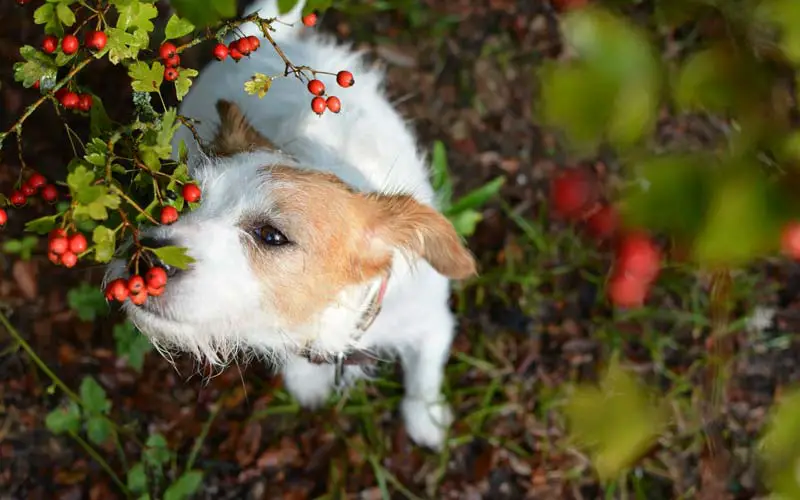
Conclusion
In conclusion, while fruits can be a healthy and tasty treat for your dog, it’s essential to be aware of which ones are dangerous and how to avoid them. Grapes, raisins, and certain citrus fruits, like lemons and limes, pose significant health risks, from kidney failure to digestive issues. Lesser-known fruits like plums, rhubarb, and unripe tomatoes can also be toxic, leading to symptoms such as vomiting, lethargy, or even seizures.
By keeping harmful fruits out of reach, educating family members, and closely monitoring your dog during outdoor activities, you can help prevent accidental ingestion. Safe alternatives like apples (seedless), bananas, and blueberries can provide your dog with healthy, nutritious treats without the risk.
Take action today by assessing the fruits in your home and garden, ensuring your dog is only enjoying safe and healthy treats. Always consult your veterinarian if you’re uncertain about what’s safe for your dog to eat, and don’t hesitate to act quickly if you suspect poisoning. A little prevention can go a long way in keeping your dog healthy and happy.